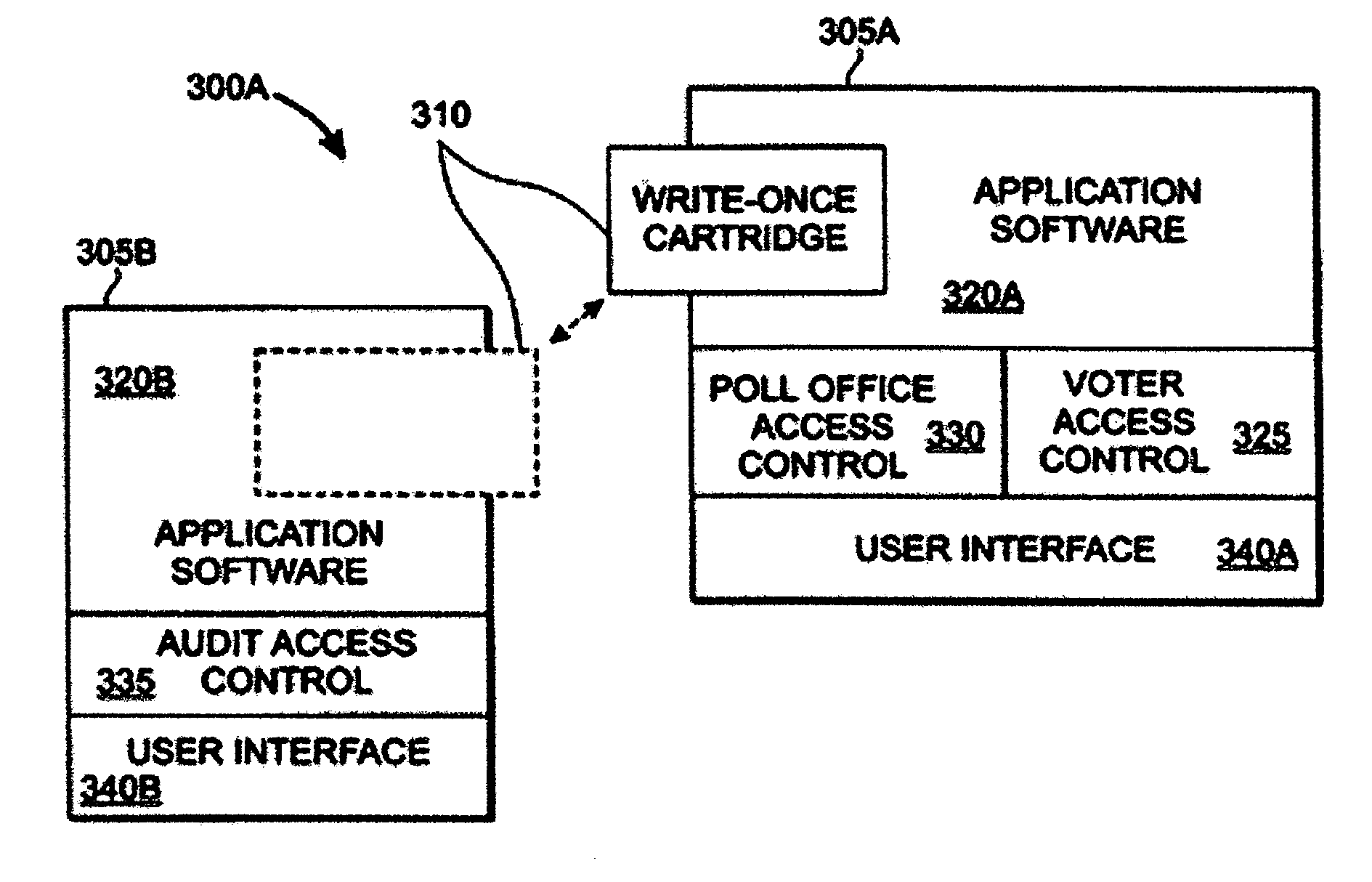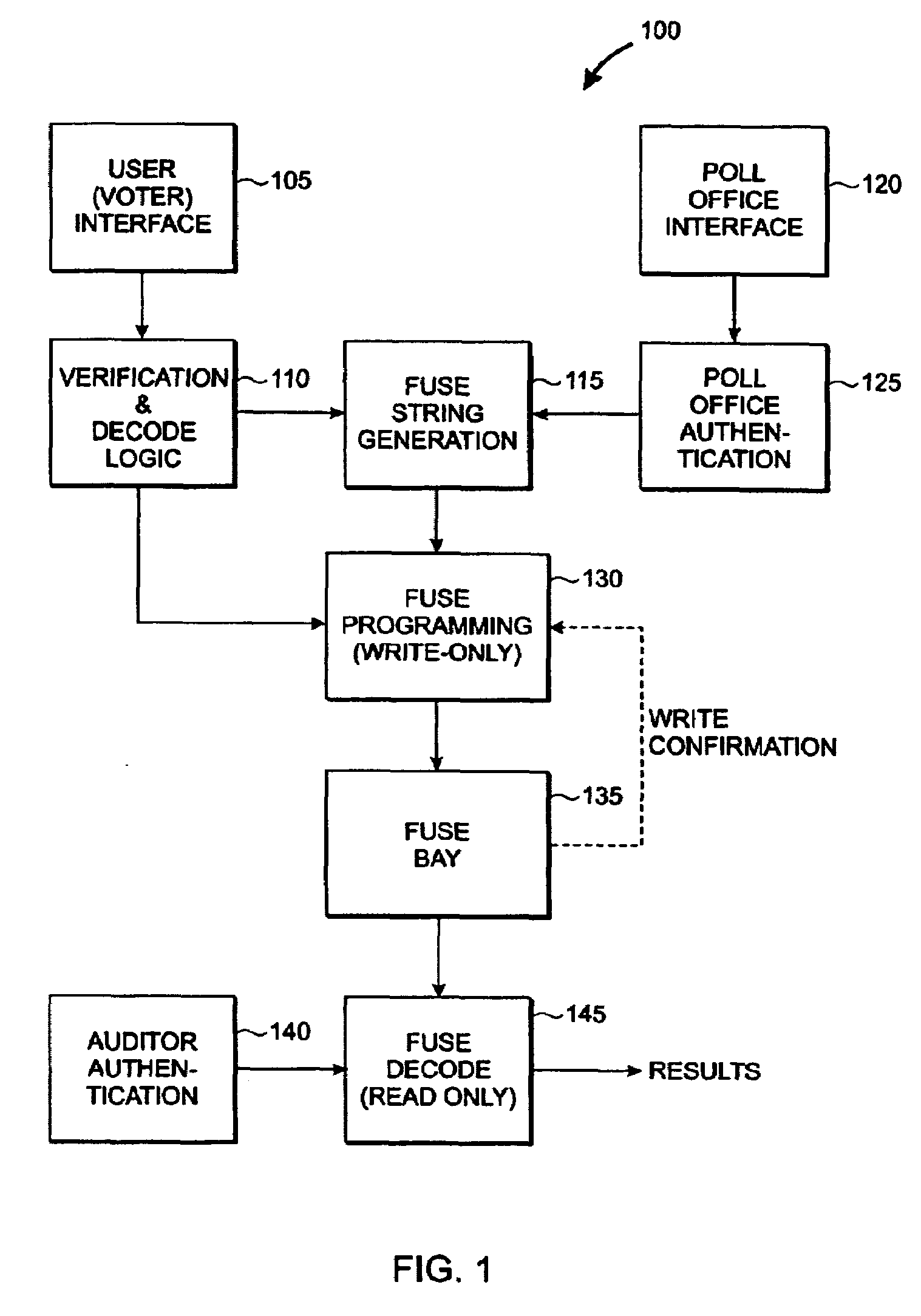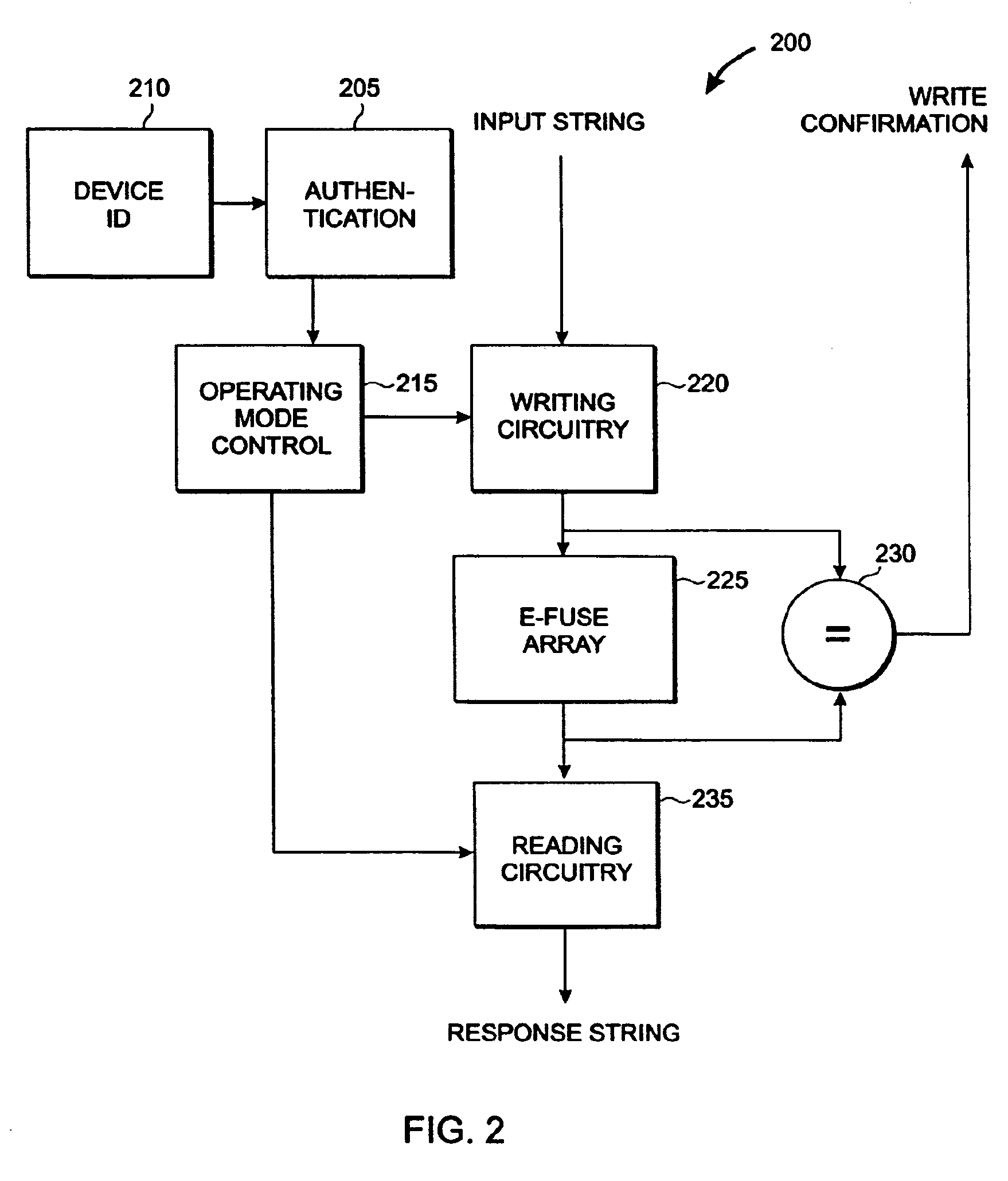Secure electronic voting device
a voting device and electronic technology, applied in the field of voting devices, can solve the problems of tampering schemes, high-tech electronic voting machines, tedious process of collecting, counting and tabling paper ballots, etc., and achieve the effect of preventing alteration and/or reading
- Summary
- Abstract
- Description
- Claims
- Application Information
AI Technical Summary
Benefits of technology
Problems solved by technology
Method used
Image
Examples
Embodiment Construction
[0040]According to the invention, a write-once vote recording medium is employed to record individual votes, providing both an audit trail and a record of vote totals. This write-once memory has several characteristics that make it uniquely suited for recording of vote information. Specifically, the vote recording medium:[0041]acts as a write-once memory, which once programmed cannot be altered.[0042]has two distinct modes of operation, “write mode” and “read mode”[0043]when in “write mode”, the medium cannot be read[0044]when in “read mode”, the medium cannot be written[0045]once switched into “read mode” the medium cannot be switched back into “write mode”
[0046]Preferably, the vote recording medium is an e-fuse array (similar in nature to older “fusible-link” PROMs). Also, the vote recording medium preferably embodies a hardware confirmation mechanism for verifying that a requested write operation was successfully and accurately executed. This confirmation mechanism provides write...
PUM
 Login to View More
Login to View More Abstract
Description
Claims
Application Information
 Login to View More
Login to View More - R&D
- Intellectual Property
- Life Sciences
- Materials
- Tech Scout
- Unparalleled Data Quality
- Higher Quality Content
- 60% Fewer Hallucinations
Browse by: Latest US Patents, China's latest patents, Technical Efficacy Thesaurus, Application Domain, Technology Topic, Popular Technical Reports.
© 2025 PatSnap. All rights reserved.Legal|Privacy policy|Modern Slavery Act Transparency Statement|Sitemap|About US| Contact US: help@patsnap.com



